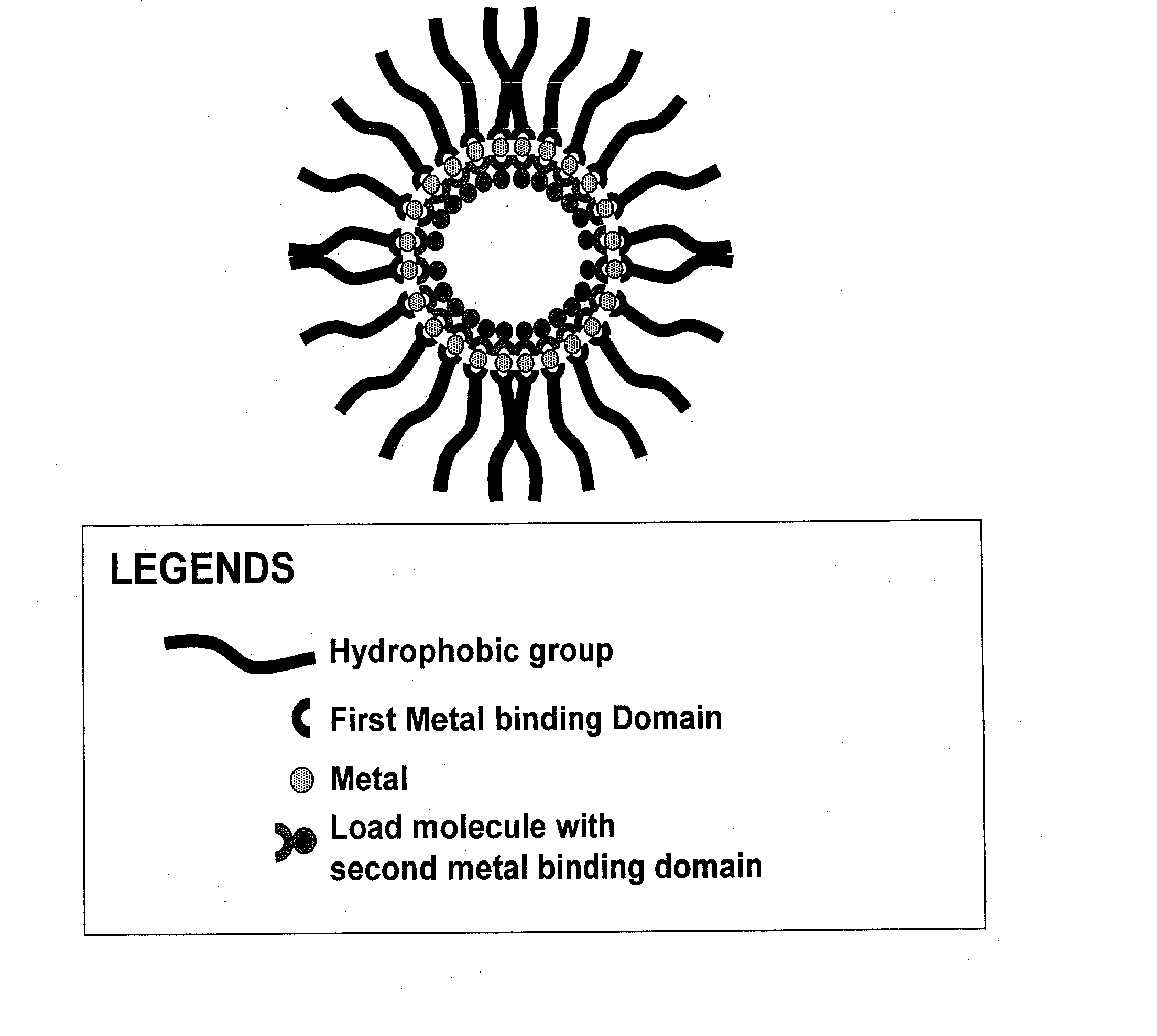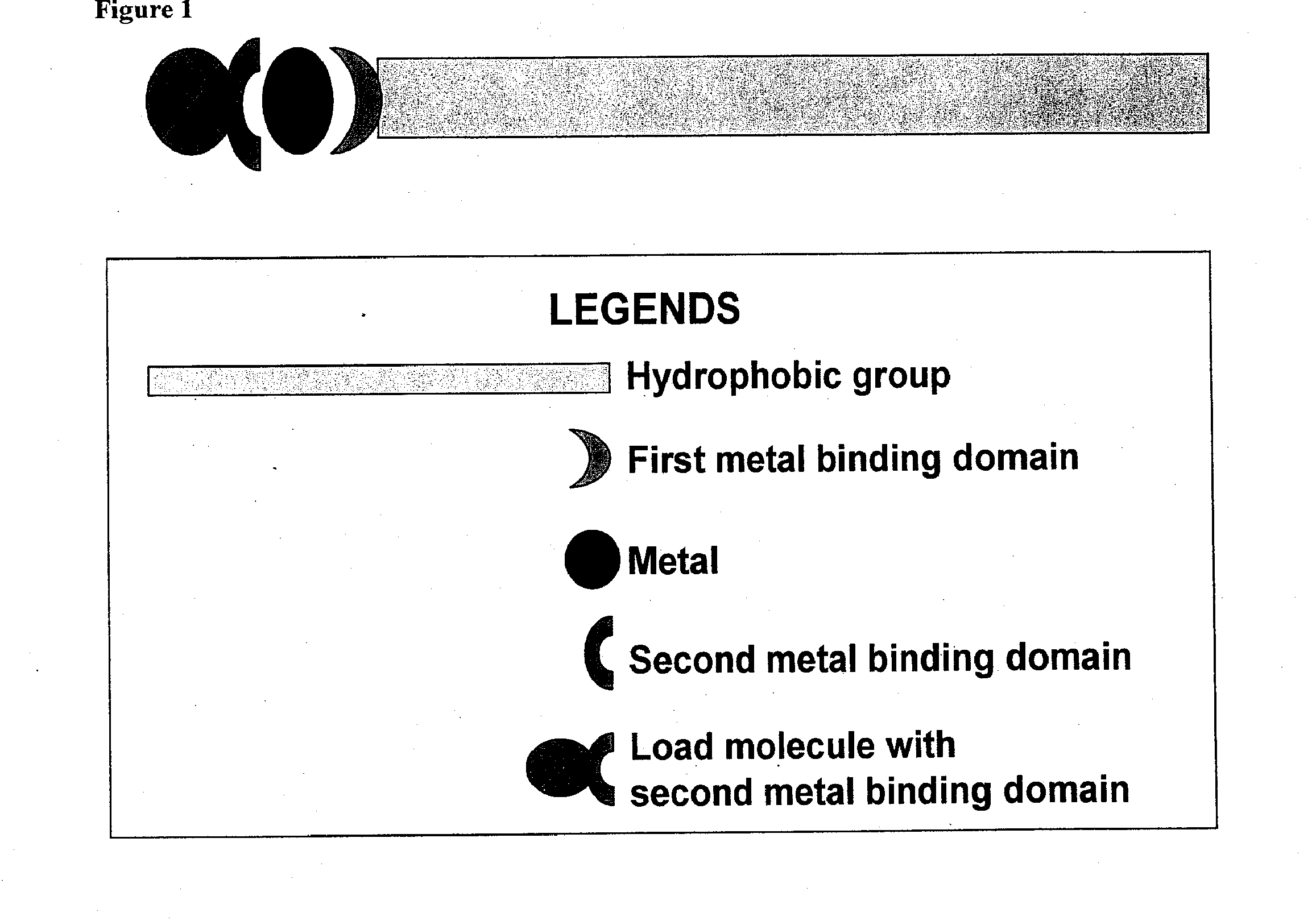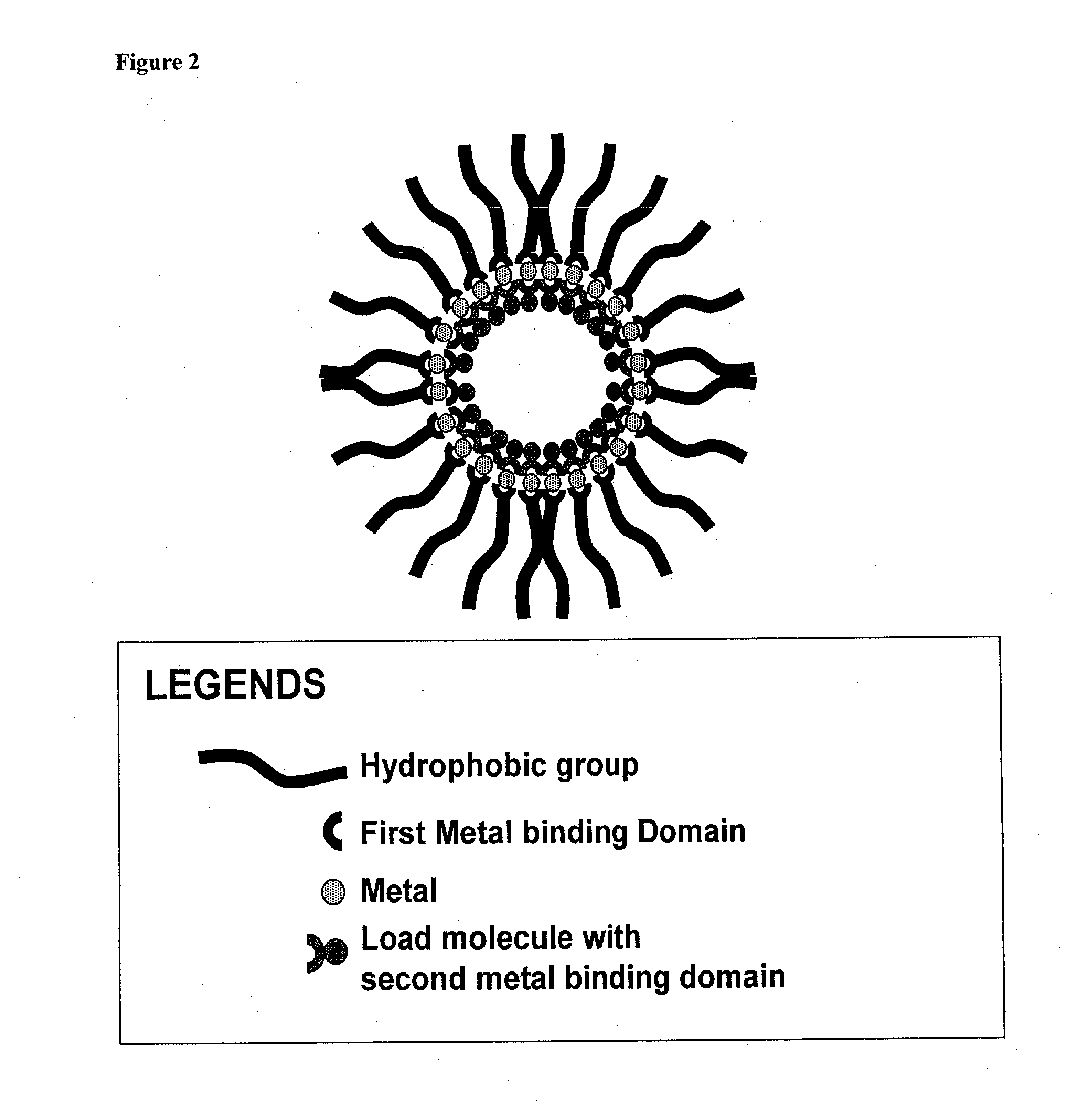Compositions for delivery of therapeutics and other materials
- Summary
- Abstract
- Description
- Claims
- Application Information
AI Technical Summary
Benefits of technology
Problems solved by technology
Method used
Image
Examples
example 1
Preparation of a Hydrophobic Group With Two Amino Termini using 1,18-octadecanedioic acid
[0145] Alkyl chains with amino termini at both ends are normally available commercially. Alkyl chains with two carboxyl ends can be made into alkyl chains with two amino ends as follows: A mixture of one gm of 1,18-octadecanedioic acid (Mw=314.46; has 6.36 mmol carboxyl group) 0.92 g NHS [Mw=115.1; Hydroxysuccinimide; 25% molar excess] is added, 1.5 g EDC [Mw=191.7; N-(3-dimethylaminopropyl)-N′-ethylcarbodiimide hydrochloride; 25% molar excess] in 20 ml of dichloromethane, is slowly added to 9.5 ml ethylene diamine (Mw=60; 25 fold molar excess) in 20 ml of dichloromethane and the solution is stirred for 2 h. The reaction mixture is washed with aqueous 5% HCl, followed by brine drying over magnesium sulfate and concentration by rotary evaporation yielding the di-aminoterminated product [i.e., (H2N(CH2)2NHCO(CH2)16CONH(CH2)2NH2].
example 2
Preparation of N-hydoxysuccinamide Esters of Fatty Acids and Aromatic-alkyl carboxylic acids
[0146] The N-hydoxysuccinamide esters of fatty and aromatic-alkyl carboxylic acids will facilitate the synthesis of hydrophobic chains or groups with metal binding domains and hydrophobic groups with hydrophilic groups of the present invention. These esters react readily with amino groups in aminated metal binding domains or aminated hydrophilic groups. The following method is adopted from Lapidot et al. [Lapidot, Y., Rappoport, S. and Wolman, Y. (1967) J. Lipid Res., 8, 142]: (i) prepare a 230 mM solution of N-hydroxysuccinimide by dissolving 3.45 g (30 nmol) in 30 ml of ethyl acetate dried over molecular sieve pellets in a stoppered 250-ml glass conical flask; (ii) to the above solution add 30 nmol of desired fatty acid; (iii) prepare a solution containing 30 mmol (6.18 g of dicyclohexyl carbodiimide in 10 ml ethyl acetate, and add it to the solution of fatty acid; (iv) allow the reaction...
example 3
Preparation of methoxypoly(ethyleneglycol) Chain with Amino End[MPEG-amino]
[0148] Hydrophilic groups such as methoxy poly(ethyleneglycol) chains with amino termini at both ends are normally available commercially. However, if supplies are limited, methoxy poly(ethyleneglycol) chains with carboxyl (MPEG-carboxy) can be made into methoxy poly(ethyleneglycol) chains with amino ends as follows: Ten gm of MPEG-carboxy (Mw=5 kDa; has 2 mmol carboxyl group) is dissolved in 50 ml dioxaneTo this solution, 0.29 g NHS [Mw=115.1; N-Hydroxysuccinimide; 25% molar excess] is added followed by addition of 0.48 g DCC [Mw=206; Dicyclohexylcarbodiimide; ˜50% molar excess] while stirring. After 2 h minutes, the mixture is cooled on ice, filtered through glass fiber paper, and added, drop-vise to an excess of diamine in dioxane and stirred overnight. Dioxane is removed under reduced pressure and the resultant MPEG-amine is purified by resolubilization in dichoromethane, filtration and ultrafiltration. ...
PUM
| Property | Measurement | Unit |
|---|---|---|
| Mass | aaaaa | aaaaa |
| Therapeutic | aaaaa | aaaaa |
| Hydrophilicity | aaaaa | aaaaa |
Abstract
Description
Claims
Application Information
 Login to View More
Login to View More - R&D
- Intellectual Property
- Life Sciences
- Materials
- Tech Scout
- Unparalleled Data Quality
- Higher Quality Content
- 60% Fewer Hallucinations
Browse by: Latest US Patents, China's latest patents, Technical Efficacy Thesaurus, Application Domain, Technology Topic, Popular Technical Reports.
© 2025 PatSnap. All rights reserved.Legal|Privacy policy|Modern Slavery Act Transparency Statement|Sitemap|About US| Contact US: help@patsnap.com



